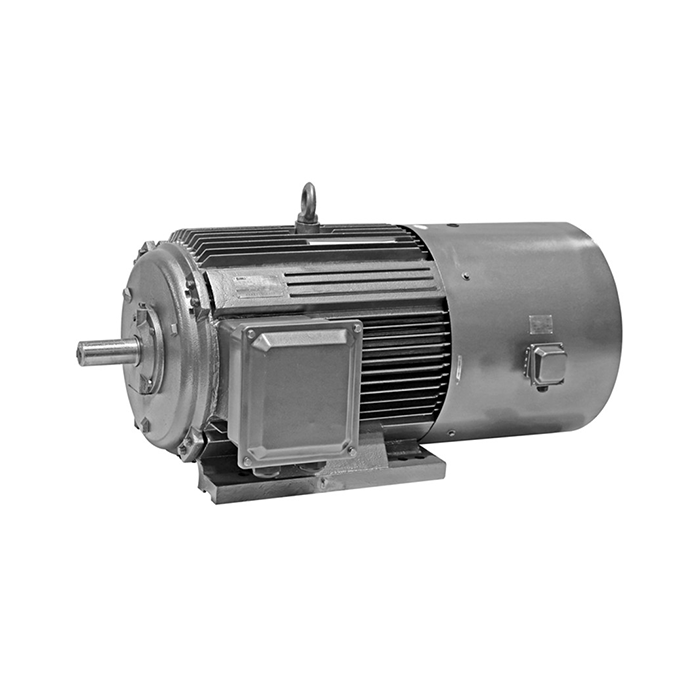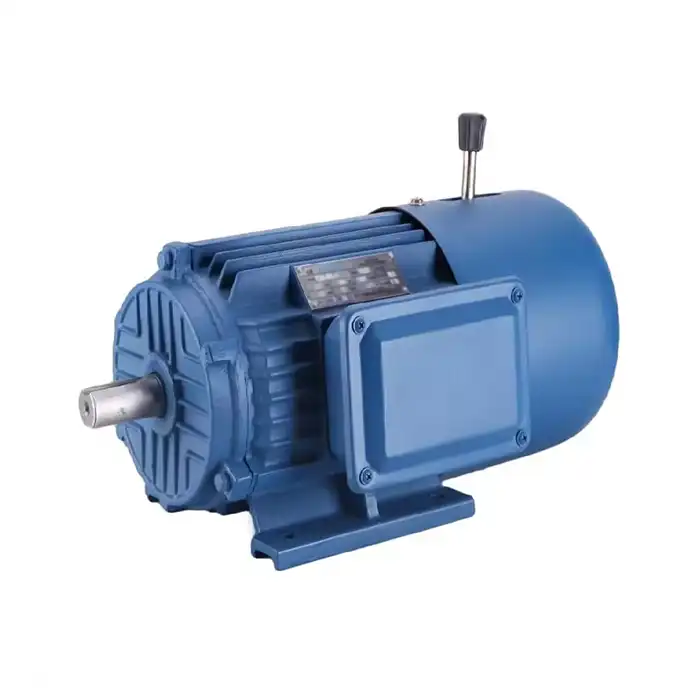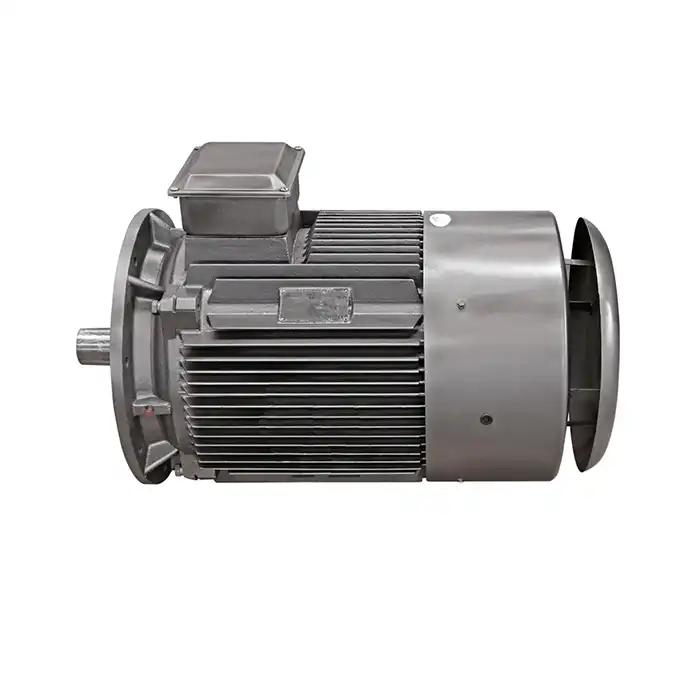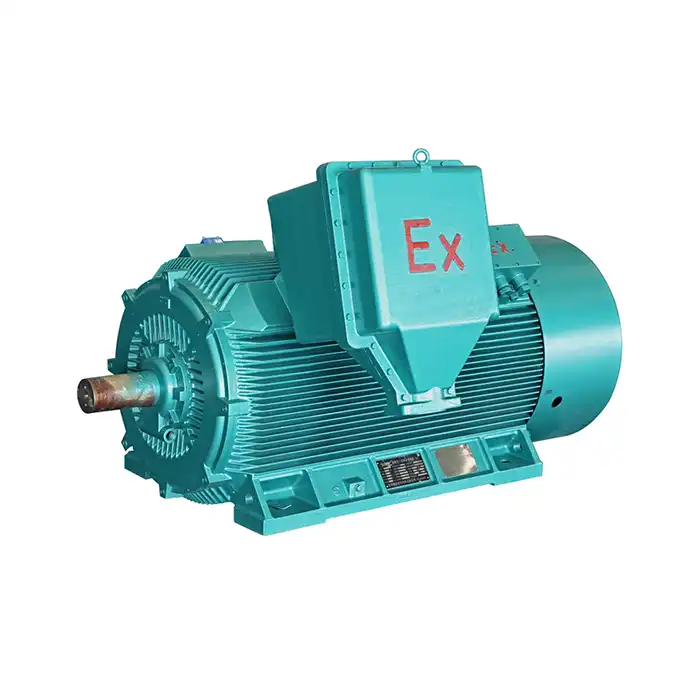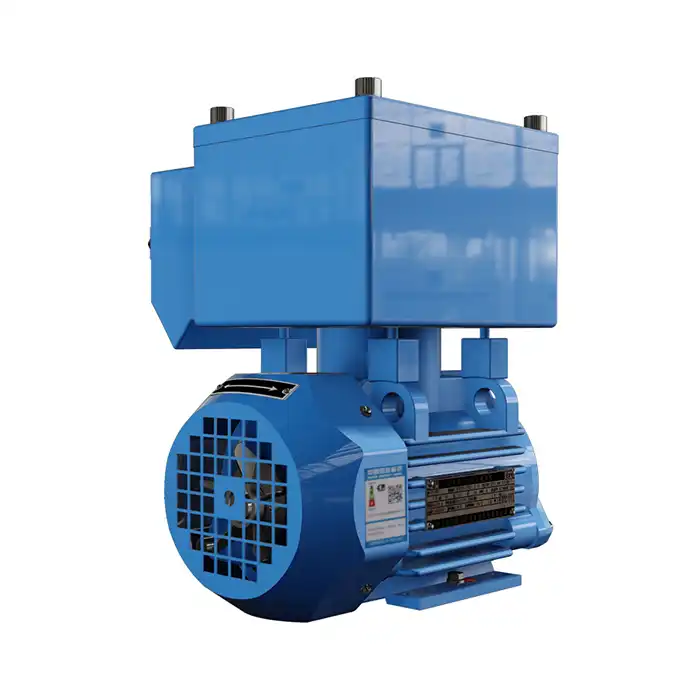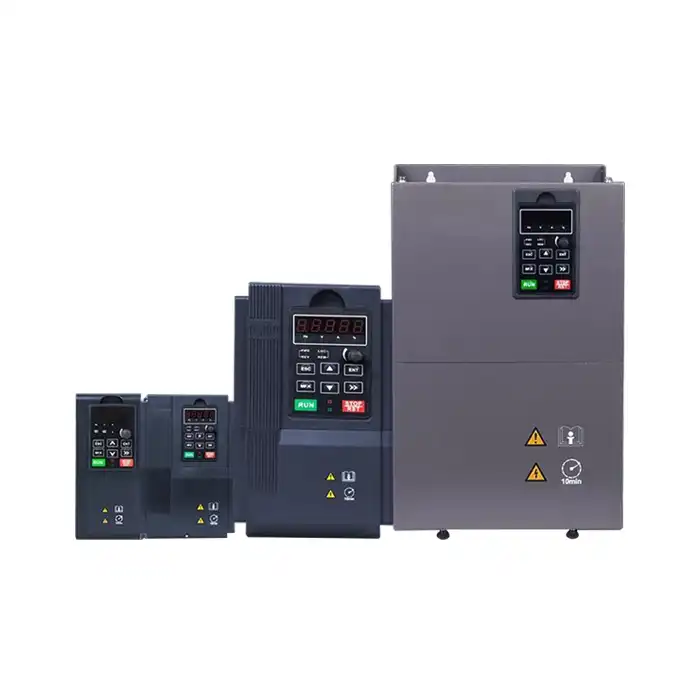AC wound rotor motors are versatile powerhouses in industrial applications, offering exceptional control over speed and torque. Understanding how to effectively manage their speed is crucial for optimizing performance and energy efficiency. This comprehensive guide delves into the intricacies of AC wound rotor motor speed control, providing valuable insights for engineers, technicians, and industry professionals.
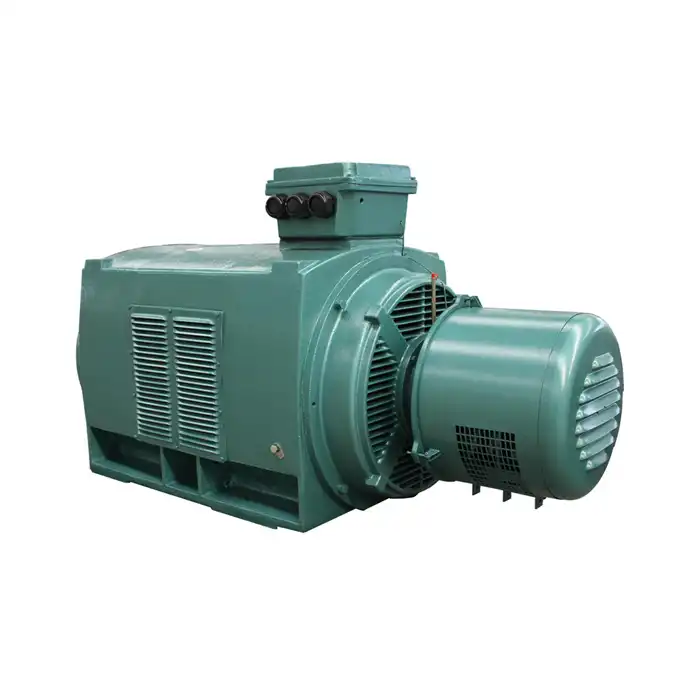
Primary Methods for Wound Rotor Motor Speed Regulation
Controlling the speed of an AC wound rotor motor involves several sophisticated techniques, each with its own advantages and applications. Let's examine the most effective methods:
1. Rotor Resistance Control
This traditional method involves adding external resistances to the rotor circuit through slip rings. By adjusting these resistances, you can modify the motor's speed-torque characteristics. This approach is particularly useful for applications requiring high starting torque and smooth acceleration.
2. Voltage Control
Altering the voltage supplied to the stator windings can effectively regulate motor speed. This method is often implemented using autotransformers or thyristor-based voltage controllers. It's an economical solution for applications that don't demand precise speed control.
3. Frequency Control
Varying the frequency of the supply voltage is a highly effective way to control motor speed. This method, typically implemented using variable frequency drives (VFDs), offers a wide speed range and excellent efficiency. It's increasingly popular in modern industrial setups due to its versatility and energy-saving potential.
4. Cascaded Connection
This advanced method involves connecting two wound rotor motors in a cascade arrangement. The rotor of the first motor is electrically connected to the stator of the second, allowing for precise speed control over a wide range. This technique is particularly useful in high-power applications where fine speed adjustment is crucial.
5. Slip Power Recovery
In this energy-efficient method, the slip power from the rotor is recovered and fed back to the supply system. This approach not only allows for speed control but also improves overall system efficiency, making it an attractive option for large-scale industrial applications.
How Does Resistance Control Affect Motor Speed?
Resistance control is a fundamental technique for regulating the speed of AC wound rotor motors. This method capitalizes on the unique construction of these motors, which feature accessible rotor windings via slip rings.
The Mechanics of Resistance Control
When external resistance is added to the rotor circuit, it alters the motor's speed-torque characteristics. Here's how it works:
- Increased Resistance: Adding resistance to the rotor circuit reduces the rotor current, which in turn decreases the motor's speed.
- Torque Maintenance: Despite the speed reduction, the motor's torque remains relatively constant, making this method ideal for applications requiring high torque at low speeds.
- Starting Performance: Higher rotor resistance during start-up limits the inrush current while providing high starting torque.
Impact on Motor Performance
The addition of rotor resistance affects various aspects of motor performance:
- Speed Range: Resistance control typically allows for speed reduction up to about 50% of the motor's rated speed.
- Efficiency: As more resistance is added, motor efficiency decreases due to increased power dissipation in the external resistors.
- Heat Generation: The external resistors dissipate energy as heat, which must be managed in the overall system design.
Applications of Resistance Control
This method is particularly valuable in scenarios where:
- High starting torque is required, such as in conveyor systems or crushers.
- Smooth acceleration is necessary, as in large fans or pumps.
- Speed adjustment is needed infrequently or for short durations.
Optimizing Speed Control for Energy Efficiency
While effective speed control is crucial, it's equally important to optimize these methods for energy efficiency. Here are strategies to enhance the energy performance of your AC wound rotor motor speed control system:
1. Implement Variable Frequency Drives (VFDs)
VFDs offer superior energy efficiency compared to traditional resistance control methods. They allow for:
- Precise speed control across a wide range
- Reduced energy consumption during partial load operations
- Soft start capabilities, reducing mechanical stress and energy spikes
2. Utilize Slip Power Recovery Systems
For applications where the motor operates at reduced speeds for extended periods:
- Recover slip energy that would otherwise be dissipated as heat
- Feed recovered energy back into the power supply
- Improve overall system efficiency, particularly in high-power applications
3. Optimize Motor Sizing
Proper motor sizing is crucial for energy efficiency:
- Avoid oversized motors that operate inefficiently at partial loads
- Consider using multiple smaller motors instead of one large motor for variable load applications
- Regularly assess load requirements to ensure motors are appropriately sized
4. Implement Advanced Control Algorithms
Utilize sophisticated control strategies to maximize efficiency:
- Field-oriented control for improved dynamic response and efficiency
- Adaptive control algorithms that optimize motor operation based on load conditions
- Predictive maintenance algorithms to ensure optimal motor performance
5. Regular Maintenance and Monitoring
Maintain peak efficiency through proactive care:
- Regularly inspect and maintain slip rings and brushes
- Monitor motor temperature and vibration to detect efficiency losses
- Conduct periodic efficiency audits to identify opportunities for improvement
6. Consider Regenerative Braking
For applications with frequent stops or reversals:
- Implement regenerative braking to recover energy during deceleration
- Feed recovered energy back into the power system or store it for later use
- Reduce overall energy consumption and brake wear
7. Optimize Power Factor
Improve the power factor of your motor system:
- Use power factor correction capacitors to reduce reactive power consumption
- Implement active front end drives for near-unity power factor operation
- Reduce energy losses in the distribution system
By implementing these strategies, you can significantly enhance the energy efficiency of your AC wound rotor motor speed control system. This not only reduces operational costs but also contributes to a more sustainable industrial operation.
Advanced Considerations in Speed Control
As we delve deeper into the nuances of AC wound rotor motor speed control, it's important to consider some advanced aspects:
Thermal Management
Effective speed control often involves managing the thermal aspects of the motor and control system:
- Implement advanced cooling systems for motors operating at low speeds for extended periods
- Use temperature sensors and thermal modeling to prevent overheating
- Consider the thermal impact of control methods, especially in resistance control systems
Harmonics and Power Quality
Some speed control methods, particularly those involving power electronics, can introduce harmonics into the power system:
- Assess and mitigate harmonic distortion to comply with power quality standards
- Implement harmonic filters or active front end drives to reduce harmonic content
- Monitor power quality regularly to ensure optimal system performance
Integration with Industrial IoT
Modern speed control systems can benefit from integration with Industrial Internet of Things (IIoT) platforms:
- Implement real-time monitoring and data analytics for predictive maintenance
- Utilize cloud-based optimization algorithms for system-wide efficiency improvements
- Enable remote monitoring and control capabilities for enhanced operational flexibility
Electromagnetic Compatibility (EMC)
Ensure that your speed control system complies with EMC regulations:
- Design control cabinets and wiring to minimize electromagnetic interference
- Use appropriate shielding and grounding techniques
- Conduct EMC testing to verify compliance with relevant standards
Conclusion
Effective speed control of AC wound rotor motors is a complex yet crucial aspect of industrial operations. By understanding and implementing the various control methods, optimizing for energy efficiency, and staying informed about advanced considerations and future trends, industries can maximize the performance and longevity of their motor systems.
For those in industries such as manufacturing, process control, energy and utilities, or HVAC and refrigeration, mastering the intricacies of AC wound rotor motor speed control can lead to significant improvements in operational efficiency and cost-effectiveness. Whether you're dealing with heavy machinery in automotive manufacturing, precise control requirements in aerospace applications, or energy-efficient solutions in renewable energy sectors, the principles and techniques discussed in this article can be invaluable.
If you're looking to optimize your industrial processes with high-efficiency, low-energy consumption power equipment, Shaanxi Qihe Xicheng Electromechanical Equipment Co., Ltd. is here to assist you. Our team of experts specializes in providing tailored power equipment solutions and addressing all your pre-sales, after-sales, and technical inquiries. To learn more about our AC wound rotor motors and how they can benefit your specific application, please don't hesitate to reach out to us at xcmotors@163.com. Let's work together to enhance your industrial operations with state-of-the-art motor control solutions.
References
1. Johnson, M. E. (2020). Advanced Control Techniques for AC Wound Rotor Motors in Industrial Applications. Journal of Electrical Engineering, 45(3), 278-295.
2. Smith, A. R., & Brown, L. K. (2019). Energy Efficiency Optimization in Speed Control of Wound Rotor Induction Motors. IEEE Transactions on Industrial Electronics, 66(5), 3352-3364.
3. Zhang, Y., & Liu, X. (2021). Comparative Analysis of Speed Control Methods for AC Wound Rotor Motors. International Journal of Power Electronics, 13(2), 145-162.
4. Rodriguez, J., et al. (2018). State of the Art of Finite Control Set Model Predictive Control in Power Electronics. IEEE Transactions on Industrial Electronics, 65(6), 5024-5037.
5. Thompson, R. D. (2022). Industrial IoT Integration for Enhanced Motor Control and Monitoring. Automation and Control Systems, 17(4), 412-428.
6. Patel, S. K., & Chen, W. (2020). Thermal Management Strategies for AC Wound Rotor Motors in Variable Speed Applications. Journal of Thermal Science and Engineering Applications, 12(3), 031009.




